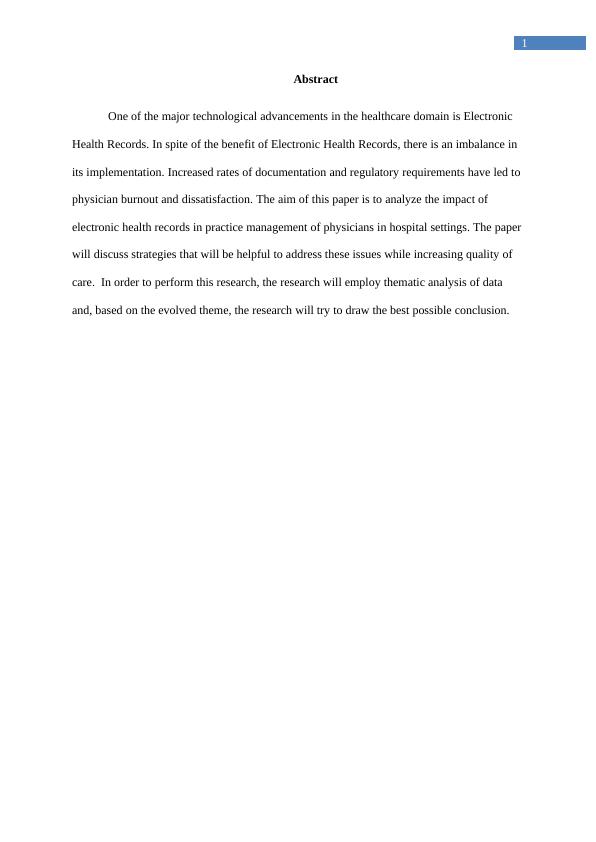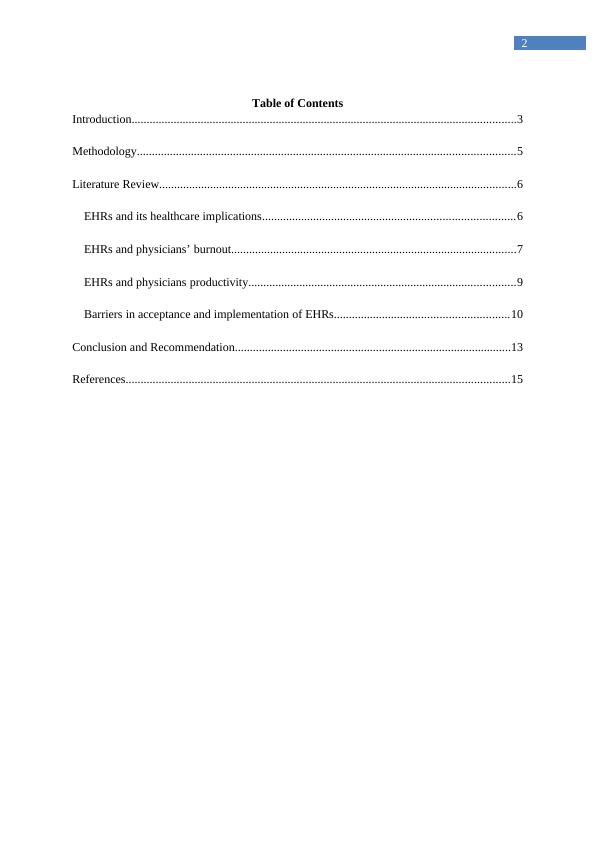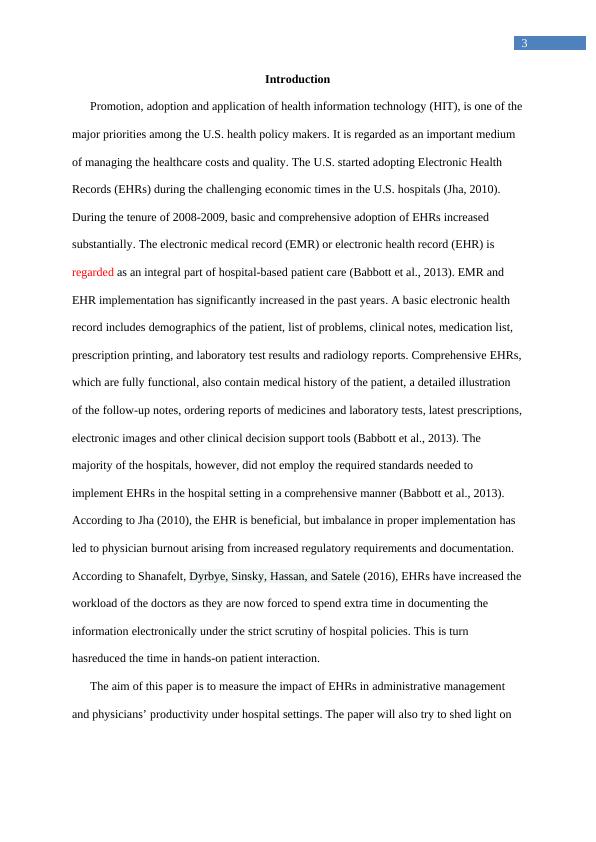(PDF) Effectiveness of an Electronic Health Record
20 Pages4897 Words37 Views
Added on 2021-04-17
About This Document
This report is based on the "impact of electronic health record on physician productivity". We will discuss here promotion, adoption and application of health information technology (HIT), is one of the major priorities among U.S. health policymakers. The U.S. started adopting electronic health records (EHRs) during the challenging economic times in the U.S. hospitals. The electronic medical record or electronic health record (EHR) is regarded as an integral part of hospital-based patient care.
(PDF) Effectiveness of an Electronic Health Record
Added on 2021-04-17
ShareRelated Documents
End of preview
Want to access all the pages? Upload your documents or become a member.
Security of Healthcare System: Components, Best Practices, and Limitations
|14
|3916
|166
Disadvantages of Paper Medical Records and Benefits of EHR
|9
|2310
|99
Do Electronic Medical Records Improve Quality Of Care?
|21
|1388
|61
Report on Introduction to EHR
|14
|1221
|15
National Electronic Health Records Survey: 2015 State and National Electronic Health Record Adoption Summary Tables
|3
|995
|221
Electronic Medical Record PDF
|4
|922
|25




